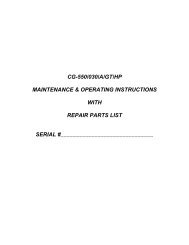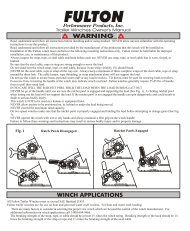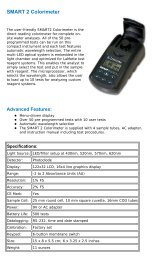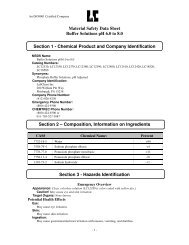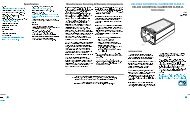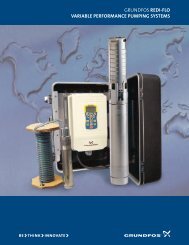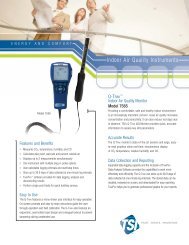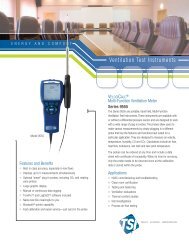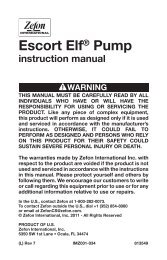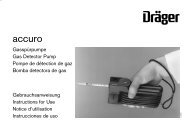LR-24 Electrofisher - Field Environmental Instruments
LR-24 Electrofisher - Field Environmental Instruments
LR-24 Electrofisher - Field Environmental Instruments
Create successful ePaper yourself
Turn your PDF publications into a flip-book with our unique Google optimized e-Paper software.
SET UP & OPERATION<br />
USER'S MANUAL<br />
Set up and Operation (Cont.)<br />
8. Place the anode ring and cathode cable approximately 12 inches<br />
(30 cm.) apart in ankle deep water.<br />
9. Press the anode pole switch and listen to the audio alarm. If<br />
it is beeping on and off 1 time per second, release the anode<br />
pole switch and increase the output voltage 50 volts and press<br />
the Enter key. Press the anode pole switch again and listen<br />
to the tone. If the audio alarm is beeping on and off two or<br />
more times per second, release the anode pole switch and begin<br />
electrofishing. If not, repeat this step until the audio alarm<br />
begins beeping on and off faster than one time per second.<br />
Fig. 6.15<br />
10. Begin electrofishing.<br />
NOTE:<br />
Duty cycle and frequency can have a huge impact on taxis. In<br />
general, lower frequencies are safer for larger fish than higher<br />
frequencies. If you are not getting any response at all from fish,<br />
change the <strong>LR</strong>-<strong>24</strong> settings as follows:<br />
a. Increase the voltage 50 volts, press the Enter key and try again.<br />
Stop increasing voltage when begin getting a forced response,<br />
(twitch), from the fish when press the anode pole switch.<br />
b. If fish are not showing taxis then increase the duty cycle by<br />
10%, press the Enter key and try again; if necessary repeat this<br />
step until elicit taxis in the fish. If increase the duty cycle to<br />
maximum and still are not getting taxis then reduce the duty<br />
cycle back to 12% and go to the next step.<br />
c. Increase the frequency by 10 Hz, press the Enter key and try<br />
again. Go back to step “a” before increasing frequency if<br />
necessary.<br />
Observe the captured fish closely. In general, if it takes more<br />
than 5 seconds for a fish to recover, it may have been shocked too<br />
severely. If it takes more than 15 seconds for a fish to recover,<br />
it was definitely shocked too much; reduce the power limit, duty<br />
cycle, frequency, or output voltage of the <strong>LR</strong>-<strong>24</strong>.<br />
www.smith-root.com<br />
31





